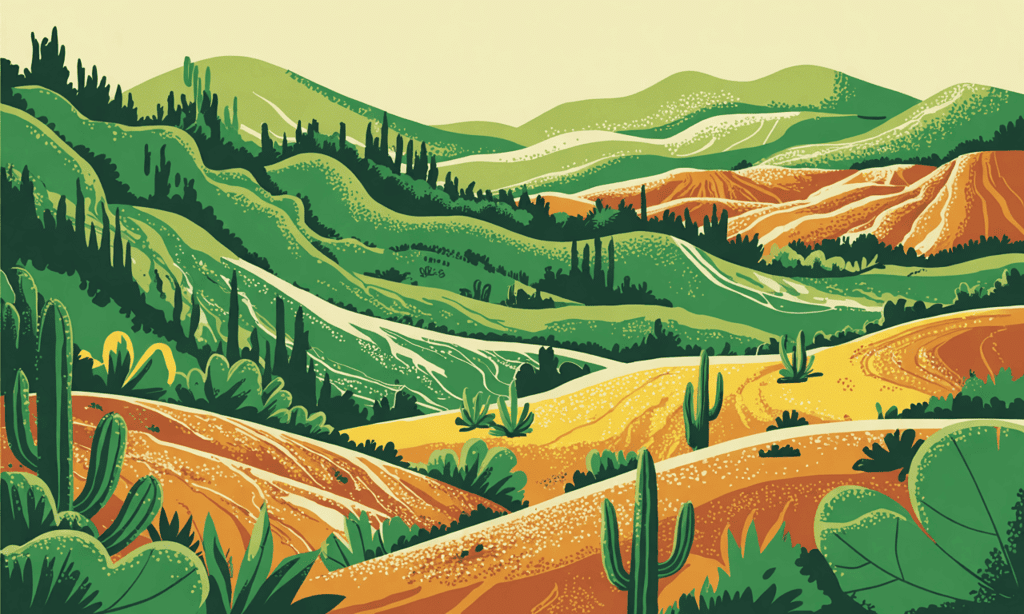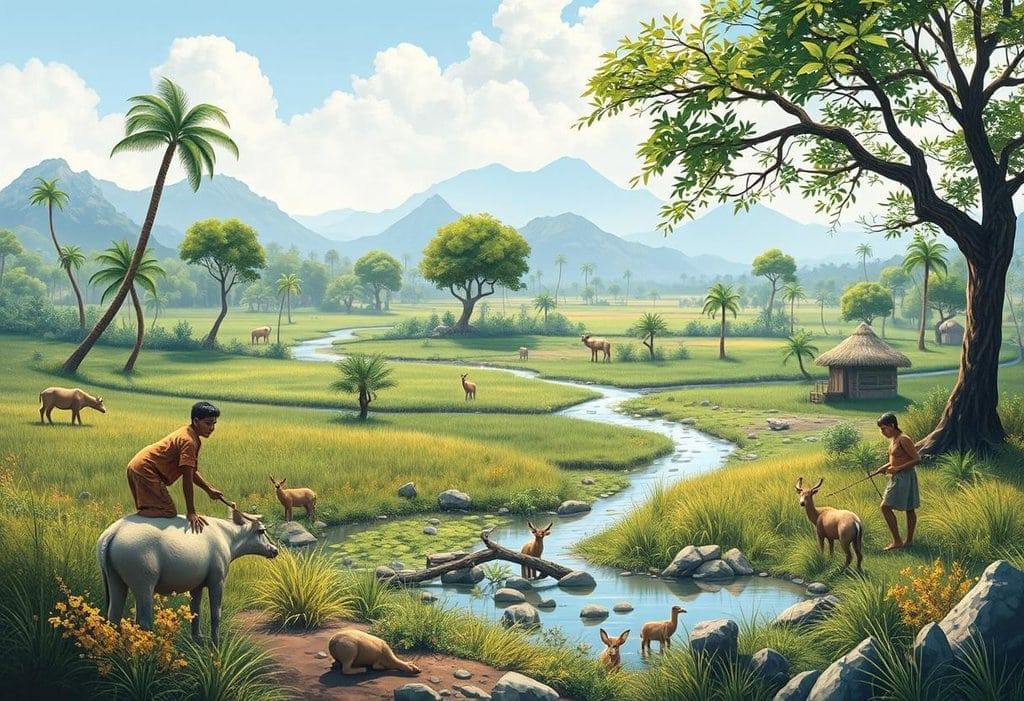Important Questions: Natural Resources and Their Use | Social Science Class 8 - New NCERT PDF Download
Q1. The resources on Earth are distributed unequally. Why?
Ans: The unequal distribution of natural resources on Earth is primarily due to various physical factors, including:
- Topography: Different landforms affect resource availability.
- Climate: Variations in weather patterns lead to differences in resource types.
- Altitude: Elevation impacts soil fertility and water availability.
Due to which some regions experience water scarcity, while others have an abundance. Soil fertility varies, affecting agricultural productivity. This combination of factors leads to the unequal distribution of resources across the globe.
Q2. What is a resource? What are the criteria (requirements) for any substance to become a resource?
Ans: A resource is any substance that can be used to satisfy a need. Resources have certain criteria that determine their value:
- Utility or usability: The substance must have a practical use.
- Economic value: It should provide some form of value, whether financial or otherwise.
- Time and technology: The importance of a resource can change over time, influenced by technological advancements.
For example, the discovery of fire enabled cooking, while the invention of the wheel led to new transport methods. Thus, resources are essential for meeting human needs and can evolve in value as circumstances change.
Q3. Explain the different types of resources.
Ans: Resources are generally classified into three main types:
- Natural Resources:These are resources obtained from nature with minimal alteration. Examples include: Air, Water (from rivers and lakes), Soil, Minerals. Natural resources can be further divided into:
Renewable Resources: Resources that can be replenished quickly, such as solar and wind energy.
Non-renewable Resources: Resources with a limited supply that take thousands of years to replenish, like coal and petroleum. - Human-Made Resources:These are resources created by altering natural substances. Examples include: Buildings, Bridges, Roads, Machinery, Technology is also considered a human-made resource.
- Human Resources: People are the most valuable resource. Their knowledge, skills, and creativity transform natural resources into usable forms. Human resources are essential for utilising other resources effectively.
Q4. How do we classify natural resources on the basis of their stock?
Ans: Natural resources can be classified based on their stock into two main categories:
Renewable Resources: These resources can be replenished naturally and are not solely dependent on human consumption. However, some, like water, soil, and forests, can be affected by human activities. Other examples include:
- Solar energy
- Wind energy
Non-Renewable Resources: These resources exist in limited quantities and take thousands of years to replenish. Once depleted, they cannot be quickly replaced, making them non-renewable. Examples include:
- Coal
- Petroleum
- Natural gas
The distribution of these resources varies due to physical factors such as terrain, climate, and altitude, leading to unequal availability across the globe.
Q5. What do you understand by sustainable development? Also, mention its basic principles.
Ans: Sustainable development refers to the careful use of resources to meet current needs while ensuring that future generations can also benefit from them. It involves a balance between resource consumption and conservation.
Key principles of sustainable development include:
- Respect and care for all forms of life.
- Improve the quality of human life.
- Conserve the earth's vitality and diversity.
- Minimise the depletion of natural resources.
- Change personal attitudes and practices towards the environment.
- Enable communities to care for their own environment.

Q6. Describe water as an indispensable form of resource.
Ans: Water is essential for the survival of all living beings. It is often called the elixir of life because life cannot exist without it. Here are some key points about the importance of water:
- All living organisms, including plants and animals, rely on water for their existence.
- Without water, life forms such as pearls, swans, and even dough cannot survive.
- The absence of this vital resource would lead to the extinction of all life on Earth.
- This is why planets other than Earth are considered unsuitable for life.
Q7. Why is maintaining biodiversity important when using natural resources?
Ans: Maintaining biodiversity ensures the stability and health of ecosystems that provide essential services such as:
- Pollination for crops
- Water purification by forests
- Climate regulation
Overexploitation (like overfishing or deforestation) reduces biodiversity and disrupts these services, threatening food and water security.
Preserving biodiversity supports the natural cycles that sustain renewable resources and ensures life support systems for future generations.
Q8. What is resource conservation and why is it important?
Ans: Resource conservation involves the careful use of resources to prevent their depletion and ensure they can be renewed over time. It is crucial for several reasons:
- Maintains life support systems: It helps sustain the natural systems that support life on Earth.
- Ensures sustainability: Conservation allows renewable resources to remain available for future generations.
- Protects biodiversity: It aids in preserving the variety of life on our planet.
By adopting resource conservation practices, we can:
- Change our attitudes and behaviours towards the environment.
- Empower communities to take care of their surroundings.
- Minimise the depletion of natural resources.

Q9. How does overexploitation of forests disrupt their natural cycles?
Ans: Overexploitation of forests (e.g., excessive logging) disrupts their natural regeneration and leads to several problems:
- Loss of biodiversity due to habitat destruction.
- Reduction in oxygen production and water filtration services.
- Soil erosion and water scarcity, which affect agriculture and human life.
Solution: Practicing controlled harvesting, afforestation, and sustainable management helps maintain forest health and ecological balance.
|
31 videos|128 docs|7 tests
|
FAQs on Important Questions: Natural Resources and Their Use - Social Science Class 8 - New NCERT
| 1. What are natural resources and why are they important for human survival? |  |
| 2. How do renewable and non-renewable resources differ? |  |
| 3. What are some major uses of water as a natural resource? |  |
| 4. What role does conservation play in the management of natural resources? |  |
| 5. What are some impacts of human activities on natural resources? |  |
















